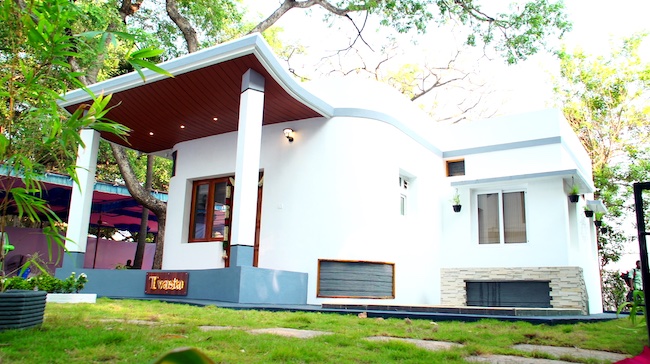As the 3D printed construction market grows, startups and nonprofits alike are beginning to leverage advances in concrete 3D printing technology to address the affordable housing crisis.

Recently, Habitat for Humanity International through its Shelter Venture Fund invested $411,000 in Tvasta Manufacturing Solutions Ltd. to increase production of affordable 3D printed homes in India. Hestia Partners and Capnetic Investments joined Habitat in investing in the construction technology startup.
Habitat’s investment in Tvasta builds on a multi-year collaboration, beginning when the company was one of seven startups to participate in Habitat’s ShelterTech India accelerator program in 2018. ShelterTech accelerators bridge the gap between housing innovation and real-world impact.
3D printed construction technology offers the potential for faster, more cost-efficient and resilient housing in high-income countries as well as emerging markets. Construction of Tvasta’s first 3D printed home, completed in late-2020, generated less waste and was completed faster than traditional methods.
“The pandemic has only exacerbated the affordable housing crisis, with rising demand as well as material costs. Through the Shelter Venture Fund, Habitat is helping ensure that the most promising, disruptive technologies achieve scale, expanding affordable housing markets to reach more low-income families in need of reliable housing,” said Patrick Kelley, vice president of Habitat’s Terwilliger Center for Innovation in Shelter.
According to UN-Habitat, an estimated 1.6 billion people lack adequate housing today, with global demand for affordable housing growing by 4000 units every hour. In order to reach more low-income households, Tvasta is working with the Government of India through its “Pradhan Mantri Awas Yojana” (Housing for All) initiative, which aims to build 20 million urban and rural homes for low-income families by 2022.
Habitat’s Terwilliger Center for Innovation in Shelter launched the Shelter Venture Fund in 2017 to invest in shelter entrepreneurs operating in the pioneer gap – where early-stage companies are often considered too new or too risky for conventional venture capital firms. The intent is to accelerate those entrepreneurs’ pathways to reaching low-income families with products and services that improve their housing conditions. To date, the Shelter Venture Fund has invested a total of $3 million in 11 startups with disruptive and innovative products and services.
To set up interviews, receive photos or for further information, contact Michele Soh msoh@habitat.org, +6 9233 1544. Link to the web version – habitat.org/ap/about/newsroom
About Habitat for Humanity
Driven by the vision that everyone needs a decent place to live, Habitat for Humanity found its earliest inspirations as a grassroots movement on an interracial community farm in U.S.A. Since its founding in 1976, the housing organization has grown to become a leading global nonprofit working in more than 70 countries. In the Asia-Pacific region since 1983, Habitat for Humanity has supported millions of people to build or improve a place they can call home. Through financial support, volunteering or adding a voice to support affordable housing, everyone can help families achieve the strength, stability and self-reliance they need to build better lives for themselves. To learn more, donate or volunteer, visit habitat.org/asiapacific.
About Habitat’s Terwilliger Center for Innovation in Shelter
The Terwilliger Center for Innovation in Shelter, a unit of Habitat for Humanity International, works with housing market actors to expand innovative and client-responsive services, products and financing so that households can improve their shelter more effectively and efficiently. The goal of the Terwilliger Center is to make housing markets work more effectively for people in need of decent, affordable shelter, thereby improving the quality of life for low-income households. To learn more, visit habitat.org/tcis.
